Story:
Metamorphosis of Capitalism: from Consumption/Growth Obsession to Conscious Systems That Serve All Life
Let us face it: the society that we have built is not working for us humans, and much less for the rest of life on this planet. What we are facing at this time is NOT a management problem - it is a design problem. Our institutions, organizations and systems that brought us so much prosperity in the 20th century are in crises because we have failed to design them with the same co-creative, symbiotic, life-giving elegance seen in the rest of nature. Our many social and environmental ills – unemployment, hunger, endless wars, environmental degradation, species extinction, social inequality – didn’t just happen to us; they are a direct result of unconscious, flawed design of our social systems.
The challenge in front of us therefore is clear: we must reinvent the social architecture of our systems, i.e. redesign our social systems in a way that continually increases their contribution to the wellbeing of all life they affect, for all time. This entry outlines a number of powerful, elegant and pragmatic developmental strategies addressing this challenge.
“The best of times and the worst of times.” We’re at an unprecedented choice point on our evolutionary journey:
We can choose —
Business as usual, our default choice, and risk slipping into an irreversible death spiral for life on our planet. Our systems are mostly in the Yellow Zone with a good measure of Orange and a dollop of Green. The diminishing resilience of our global life support systems and the increasing instability of many of our social systems suggest we’re on a slippery slope. “Business as usual” is what got us here. The slope is getting more slippery and steeper. Incrementally improving business as usual will merely delay the global disaster implicit in our current trajectory.
OR, we can choose to set out on a journey toward a Blue Star Future — a future where we free ourselves from our man-made constraints, where we wake up to who we are and who we can be — our full potential. We need to be able to imagine and enact a future that equips us to collectively transform our myriad local and global breakdowns into breakthroughs. We need to make an evolutionary leap as profound as the invention of photosynthesis.
Business as usual is the easy choice. It doesn’t require will or courage. Going for a Blue Star Future is akin to John F. Kennedy’s committing “to land a man on the moon and returning him safely to earth within the decade.” It’s a huge undertaking.
What’s at stake? Nothing less than everything. What value do we, as a species, place on transforming today’s global crises into a portal — a passage into a future where all of our social systems are designed to benefit all of life? What value do we place on avoiding sliding into a future dominated by poverty, hunger, disease, terror and ever-decreasing resources?
This body of work was born out of and inspired by our deep conviction that the next really “Big Thing” needed by all life on our planet is a renaissance in the social architecture of our society. This is because our social systems – commerce, finance, education, healthcare, government, media, etc. – are suffering the consequences of archaic and fundamentally flawed design. The three major design flaws are:
- Narrow and/or myopic definitions of success
- Systems based on control over people
- Systems devoid of capacity to consciously self-evolve.
These design flaws are so pervasive, commonplace and longstanding that they are as water to a fish — invisible. Yet essentially all of the local and global crises afflicting life on our planet – poverty, hunger, unemployment, terrorism, environmental, endless wars, species extinction, etc. – are a result of these flaws.
Our renaissance in social architecture — the reinvention of our social systems — will reverse these design flaws — and change everything.
Notice that each of the above three design flaws is “perfectly designed” to retard our focusing on the root systemic causes of our pervasive crises. As a consequence, our attempts to “fix” these crises frequently exacerbate them. Our “declaring war” on drugs, poverty and terrorism illustrates the futility of attempting, as Einstein put it, to solve problems using the same level of consciousness that created them.
All social systems are perfectly designed… to get the results they get.
As a species we’ve made enormous progress in technological design. We have become masters at inventing, producing and marketing things. Our Industrial and Information Ages have served this kind of evolutionary process very well. However, the unintended consequences of the above design flaws are horrific, and could become fatal for our species. Our collective social systems are “perfectly designed” to produce all of these unintended crises. Our design challenge is to become as innovative and collaborative in addressing our environmental and social design challenges as we have in the development and marketing of our “things.”
We argue that when it comes to reinventing our society (and capitalism), the most useful "unit of change" is a social system – rather than an individual. Why? Because while it is very tempting to blame the “1%” (i.e. rich heartless men) for all our socio-economic-environmental ills, it is our dysfunctional social systems (organizations, institutions, industries, governments, cities, regions, education, healthcare, capitalism, etc.) that produce the vast majority of the crises. (Ironically, the “all-powerful 1%” are mostly powerless to change these systems – our CEOs and elected officials are just as enslaved by our systems as the rest of us!)
So if we want to reinvent our society in a way that works for all life, we need to come up with a pragmatic and effective approach to reinventing our social systems so that their impact and outcomes work for all life they touch.
The strategy/solution for such an audacious transformation has to address the following questions and challenges:
- How do you transform a social system from machine-like design to consciously-evolving-living-system-like design, from Red/Orange/Yellow culture to Green/Blue culture, from Sad-Face social architecture to Happy-Face one? What is the nature of this challenge and breakthrough? What is the most pragmatic and effective strategy?
- How do you deal with the huge diversity of social systems – different kinds, complexities, sizes, cultures, etc.? Can the strategy be elegant enough to fit all?
- What is the ideal unit of design? Most systems are nested and interconnected – do you start with an organization, an industry or a region?
- How does the approach scale? There are myriads of social systems. The approach has to be self-propagating, self-improving, self-correcting and yes, consciously self-evolving.
- How is it economically sustainable?
The approach presented here consists of three mutually supporting strategies:
- Regional Metamorphosis: a comprehensive strategy for bootstrapping and supporting the transformation of social systems in a given region/city
- Global Guild of Evolutionary Architects (GlobalGEA): a global business eco-system of evolutionary architects committed to supporting Regional Metamorphosis Initiatives around the globe
- Generative Action Learning Expedition (GALE): a unique developmental strategy and our name for action-learning infrastructures that enable a given social system to grow its capacity to become consciously self-evolving — to adapt to a changing world in a way that best serves all life.
Regional Metamorphosis and GlobalGEA
We have become convinced that “region” is the ideal unit of design for addressing the tremendous challenge of reinventing our social systems and societal metamorphosis as a whole.
By “region” we mean a geographic area that is 1) large enough to include whole watersheds and bio-regions, as well as viable socioeconomic ecosystems, and 2) small enough to be embraced as home by its inhabitants.
Though the starting point will rarely be an all-embracing region-wide initiative, we are convinced that however you begin, the quest for wholeness will tend to ultimately lead to a region.
By focusing on a region as a basic unit of design it is possible:
- To rise above the pervasive sense of hopelessness and helplessness implicit in today’s entangled and fragmented social systems.
- To realize myriad economies of wholeness. (The true costs of fragmentation is staggering. The true benefits of designing our social forms as models of and contributors to wholeness are HUGE.)
- To unite the game-ready infinite players (GRIPs) from all sectors, levels and walks of life. (We are not alone. We’re all in this region together. Together we can create a future that works for all of life in the region.)
- To turn the energy of frustration and helplessness implicit in today’s social forms into the unlimited energies implicit in the co-creative collaboration implicit in whole conscious living systems.
- To achieve the economies of scope and scale needed to get at the root systemic causes of a region’s ills.
- To evolve developmental capacity that can serve all systems blessed with leadership committed to transformational change.
As a strategy, Regional Metamorphosis recognizes that bio-regions are the fundamentally different places on our planet, so a movement in which the people sort out the details at that scale, but share universal values, tools and knowledge, offers us the best hope of re-directing society as a whole away from the cliff.
Regional Metamorphosis and GlobalGEA are two complementary strategies. The purpose of any Regional Metamorphosis Initiative (RMI) is to promote and support the transformation of that region’s culture and social systems in ways that make a lasting contribution to the wellbeing of all life in that region and beyond. Such a far-reaching capacity-building initiative will require developing all three spans of the 3-Span Bridge:
- Growing the regional expertise to support generative B/C-work in support of both community development and systemic capacity buildng
- Designing and evolving the special regional infrastructure required to support the on-going and ever-evolving generative B/C-work implicit in region-wide transformation
- Attracting and investing regional resources (money and committed participation)
The Global Guild of Evolutionary Architects (GlobalGEA) will be focused on growing global expertise, infrastructure and resources in support of Regional Metamorphosis Initiatives (RMIs) as they emerge throughout our planet. More specifically:
- GlobalGEA involves developing autonomous self-evolving generative alliances with and among global expertise most relevant to the work of regional metamorphosis
- Each GlobalGEA generative alliance will fill a niche in an ever-growing, ever-evolving marketplace for providing regional metamorphosis related expertise, products and services. The global infrastructure supporting the growth of these generative alliances will complement and overlap with regional collaborative and communications infrastructure. GlobalGEA will establish a high level social architecture designed to encourage co-creative collaboration among the global experts and regions committed to becoming self-evolving.
- GlobalGEA will attract and deploy global resources in a way that maximizes the True Return on Investment (ROI) of those investments.
This image sketches out one possible configuration for an infrastructure designed to support region-wide metamorphosis work as it could appear when a region is 3-4 years into its journey. What follows is skeletal description of what such infrastructure might include.
Local place-based Action-Learning Teams (where the rubber meets the road) include Neighborhood Action-Learning Teams and Organization Action-Learning Teams. These action-learning teams are where regional metamorphosis happens. Growing regional neighborhood and organizational capacities to self-transform is at the core of this regional metamorphosis strategy. All other infrastructure described below is in support of these local place-based teams.
Regional R&D Teams include Issue-Centered Teams (e.g., gang violence, unemployment, health care, water, food, literacy, entrepreneurial innovatoin, teen pregnancies) and Practice-Centered Teams (e.g. Conversant Communications, Non-Violent Communications, Richard Barrett’s Cultural Transformation Tools, Stu Winby’s methodology, Chrysalis Work, Regional Dashboard development, communications/collaboration infrastructure.)
Each of these teams/cohorts will do R&D work on behalf of the entire region. The teams would especially draw from elder and youth players who are passionate about their particular R&D-focused generative action-learning expedition. They would work as a cohort to —
- Assess the current state of the region with respect to their area of focus
- Research and engage most relevant knowledge/expertise, within the region and beyond
- Develop meaningful measures and potential feedback loops
- Develop themselves as valued regional leaders/practitioners
Annual Regional Metamorphosis Festivals - these gatherings would be designed to:
- Acknowledge and celebrate progress
- Present an integrating picture of the whole
- Evolve the vision of an ideal regional future
- Issue generative challenges
- Serve as a marketplace promoting/supporting cross-fertilization, face-to-face “clumping and clustering,’ and more.
Center for Regional Metamorphosis would serve as the educational hub for developing generative B/C-work capacity throughout the region. It would also be the primary center for synergy-seeking exploration with GlobalGEA and with other committed regions throughout our planet. This might come under the umbrella of a local community college or university, serving as a protected laboratory for evolving “purpose-based transformational education.”
This center could serve as the “mother chrysalis” promoting and supporting community building and systemic-capacity building throughout the region.
Regional Stewards for the Future — this generative action-learning cohort would consist of regional leaders committed to pioneering, leading and guiding a region-wide action-learning journey that demonstrates the art of the possible in social, economic and environmental sustainability. This group would be analogous to Sand Hill Road in Silicon Valley. They would serve as “social venture capitalists” seeding a wide spectrum of entrepreneurial initiatives as well as the infrastructures described here. These stewards would include players capable of attracting the resources needed to seed and guide the overal regional metamorphosis initiative.
The above hypothetical infrastructure would be designed expressly to develop generative Blue Zone B/C-work capacity throughout the region’s social systems. This infrastructure would not compete with any existing entities. Rather it would exist to help committed social systems (organizations, neighborhoods, communities) develop their capacity to multiply their contribution to the well-being of those they serve.
All of these teams would be working in ways that help multiply the effectiveness of the other teams. The work of all of these various teams would be designed in a way that supports on-going transformation at both individual and systemic levels.
The work of societal metamorphosis calls for an extreme makeover of how we traditionally approach the work of “development” for both the systems and the individuals who make up those systems. This work requires that we achieve a 10X breakthrough in the efficacy of our approaches to systemic learning and change. The GALE strategy is our answer to this unique challenge.
GALE – Generative Action-Learning Expedition – is our name for action-learning infrastructures that enable a given social system (e.g. organization, institution, region) to grow its capacity to become consciously self-evolving — to adapt to a changing world in a way that best serves all life.
The GALE approach to organizational and systemic capacity building is applicable at all levels of system in ways that support fundamental transformation — at individual, organizational and regional levels.
Our organizations and regions are not designed with the capacity to learn and transform themselves. The GALE approach provides the scaffolding required to grow that capacity and weave it throughout the fabric of today’s systems.
What is the GALE approach?
GALE is a unique developmental strategy designed to grow the systemic capacity for sustainable learning and change within a system, in a way that continually increases the system’s contribution to the wellbeing of all life.
GALE is a social system’s "chrysalis" – a special developmental infrastructure that supports the system in its metamorphosis from a caterpillar-like social organism (growth and consumption-centric) to butterfly-like organism (touching the earth lightly and making a net positive contribution to the well being of the life it interacts with.)
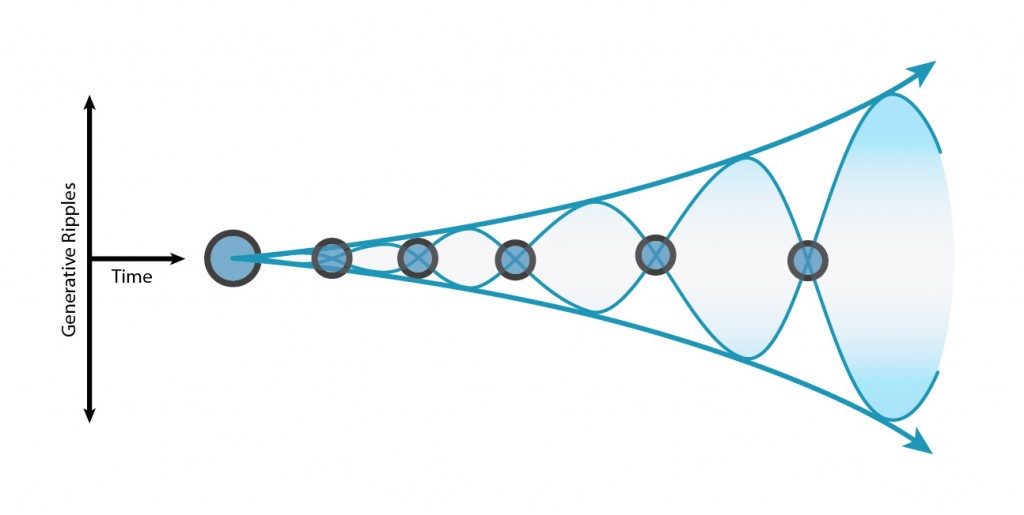
While every GALE is uniquely designed for its hosting social system, the design is always guided by the following fundamental principles:
- It is 10X commitment-based for all participants and entities — every step of the way. The GALE approach works when in the service of leadership who are deeply committed to making a large and lasting difference, and are truly ready to make a leap and invest in going for it.
- A Purpose-driven, results-oriented, future-focused developmental strategy: All research, development and implementation activity is in the service of movement toward a shared future vision.
- A quest, an adventure-filled journey, to explore and inhabit a future where humanity is consciously evolving its social systems in ways that best serve the well-being of all of life, for all time.
- Action and learning are multiplicative: All learning in service of generative actions; all actions designed to generate learning ripples.
- The GALE approach supports on-going, ever-evolving systemic learning — a necessity in a rapidly changing world.
- It is earth-based — is grounded in the reality that we are all not only totally dependent on the Earth for our health and well-being, but uniquely equipped to develop a co-creative partnership with the rest of nature in the service of the evolution and well-being of all of life.
- It is inherently appreciative — A commitment to growing synergy-seeking relationships with existing initiatives that can contribute to the larger vision.
- It is wholeness-centric — Learning and developing from wholeness toward wholeness, every step of the way. It transcends the separatist philosophies, ideologies, designs and practices endemic to most all of today’s social systems
- It embodies a Blue Star Future — is a collective commitment to evolve “Blue Zone” relationships and agreements among its participants and in all of its immediate and extended stakeholder families.
- It is designed to develop expertise in a way that any given GALE (and its off-springs) become self-sustaining, self-regulating, self-propagating and self-evolving.
- Designed to maximize generative ripples both within the system and extending to other allied systems.
GALE can be initiated at any level of system: individual, organizational and regional.
What distinguishes the GALE approach?
The GALE approach can be introduced and evolved within any given region, city and/or organization in a way that —
- Is woven throughout the fabric of that system to continually improve the efficacy and the highest purpose of that system and its subsystems.
- Substantially improves the resilience and adaptability of the overall system and each of its parts.
- Grows and distributes the collective intelligence/wisdom of the system.
- Strengthens the quality of relationships and agreements with interdependent systems.
- Enables the system and all of its parts to become self-improving, self-propagating and self-evolving.
- Will become viral — capable of spreading throughout the system and its extended stakeholder family.
What would it be worth for us to reverse our current Red/Orange/Yellow trajectory and be moving towards a Blue Star Future? How do we measure the benefits of such shift?
And speaking of measuring, one of the most important breakthroughs we must achieve is develop metrics that enable us to redefine (and measure) success as net contribution to the wellbeing of life – as distinct from narrow and myopic definitions that are prevalent in today’s social systems.
- Regions do not have any real ownership and accountability infrastructure in place. In essence, no one “owns” a region. The fragmentation and silos are staggering, the boundaries and walls are strong and thick. As a result, “bootstrapping” a regional GALE is a significant challenge.
- Generative Alliance is an incredibly powerful “fusion cell” in the new social architecture we are creating. Our generative alliances have unleashes previously unimaginable levels of co-creative collaboration, creativity, contribution and joy.
- At the personal level, we continually discover how playing your biggest possible “game” (fueled by always evolving 10X Commitments) unleashes the kind of genius, creativity and breakthrough innovation that was not remotely possible before. If there ever was a time to play big, THIS IS IT.
The body of work presented in this entry was originally developed by Bill Veltrop. Bill is a senior social architect and a pioneer in organic learning community approaches to leadership development – with 35 years of experience of innovative organization design and large-scale change implementation experience in the United States, Canada, Europe and the Far East. In 2007, Bill co-founded MISA (Monterey Institute for Social Architecture) - a growing web of evolutionary architects and allies committed to reinventing of our social systems in a way that best serves all of life — for all time. In 2011, Bill Veltrop and Max Shkud co-founded GlobalGEA (Global Guild of Evolutionary Architects) that focuses on identifying, connecting and developing expertise most relevant to supporting systemic-capacity building initiatives (GALEs) at any level of system (organizational, community and/or regional) and also “making a market” for that expertise.
Max, just looking at your title for this piece I am reminded of John Perkins' idea that we need to shift from a "death economy" to a "life economy."
- Log in to post comments


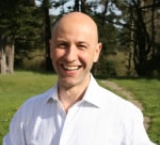
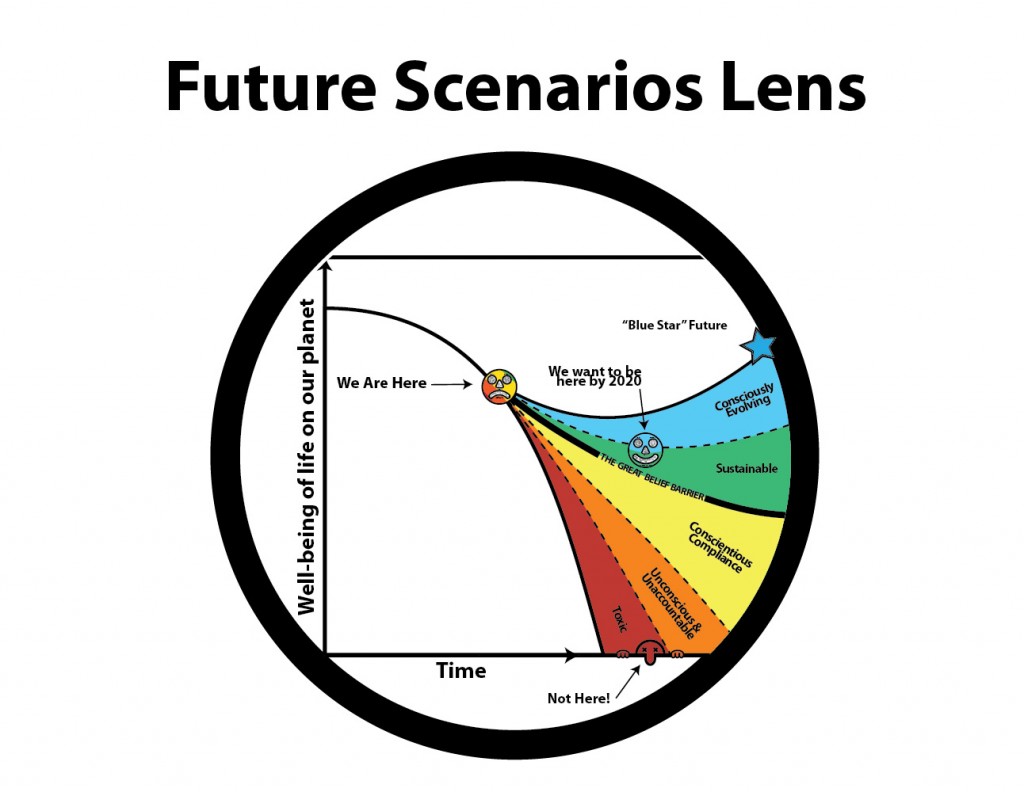
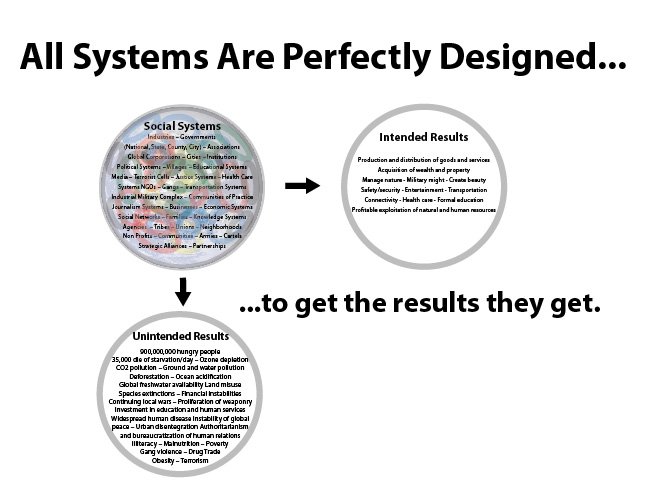
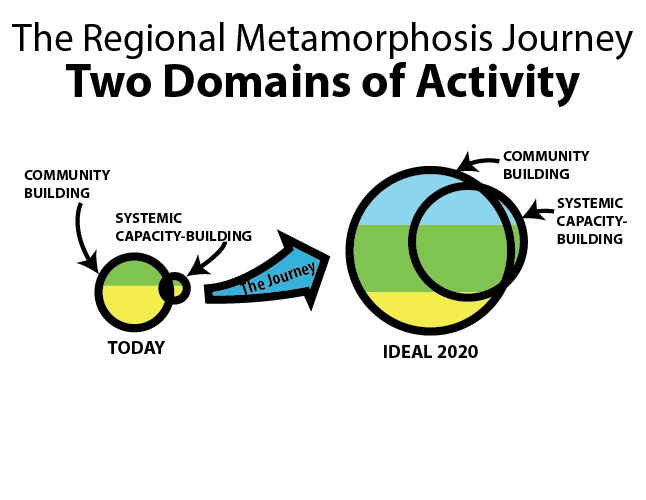

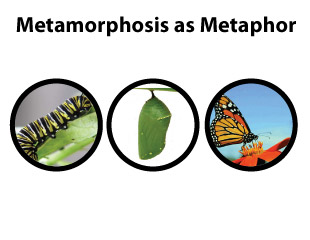

You need to register in order to submit a comment.